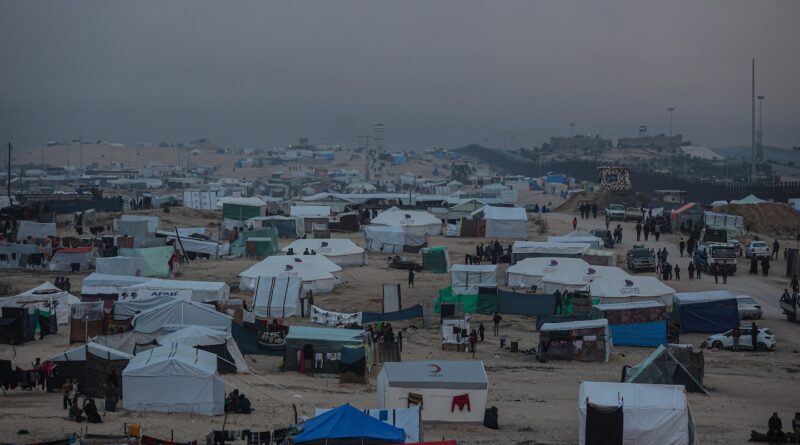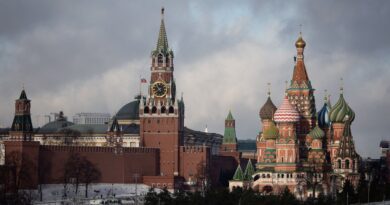No good options for Israel as it prepares for assault on Rafah
Israel faces growing warnings from allies and critics that its promised ground offensive in Rafah — a place of last resort that has seen its population grow fivefold in a matter of months — will result in a civilian bloodbath. Already strained humanitarian pipelines running through the border would collapse, the United Nations has said.
The standoff is testing Israel’s most important alliances. Egyptian officials have threatened to suspend the countries’ 40-year peace accord if an attack on Rafah forces refugees across the border; new footage obtained by The Washington Post suggests Egypt is preparing for such a scenario. President Biden has said the United States will not support a full-scale assault on Rafah unless Israel can carry out a “credible plan” to evacuate civilians in the line of fire.
“Many people there have been displaced — displaced multiple times … and now they’re packed into Rafah — exposed and vulnerable,” Biden said Monday. “They need to be protected.”
Israel is struggling to reconcile international pleas to protect innocents with demands from hard-liners at home to deliver a decisive blow to Hamas militants embedded in Gaza’s last population center. Prime Minister Benjamin Netanyahu vowed again Wednesday to attack Rafah, saying that Hamas has woven its remaining brigades, weapons and smuggling routes throughout the city.
Yehiya Sinwar, the architect of the Oct. 7 attacks that killed about 1,200 people and led to the capture of more than 250 hostages, is Israel’s top target, and Israel believes he may have retreated to Rafah.
Netanyahu has ordered his commanders to draw up plans to move civilians out of harm’s way, but those involved in the discussions concede that workable options remain elusive. An Israeli official said that planning for an evacuation was underway but that no final plan had been approved. Like others in this story, they spoke on the condition of anonymity to discuss sensitive matters.
An Israeli proposal for a string of encampments stretching along Gaza’s Mediterranean coastline that could hold more than 350,000 tents did little to appease critics when it was presented recently in Cairo, according to a second person familiar with the discussions. A State Department spokesman said Monday that the United States had yet to see a credible evacuation plan from Israel.
The Israeli military recognizes the need to minimize civilian suffering, the person said. But top political leaders insist that taking on Hamas in Rafah is vital to achieving Israel’s war aim of “destroying” the militant group.
“They are trying very hard to find a middle ground,” the person said. “They have to go into Rafah because they have to chase after Sinwar. But they can’t have thousands of civilians killed, and they know they have to deliver humanitarian aid. There aren’t any good solutions.”
The evacuation plan that Israel floated in Cairo envisioned 15 beachside encampments, each containing 25,000 tents, according to the person familiar with discussions, stretching north of Mawasi. Israel has promoted the western coastal region as a “safer zone” since November, although it has continued to target the area. At least seven people were killed in a strike on a makeshift tent community there last month, according to the director of a hospital.
Israel planned to request help from Egypt in providing health care and other aid in the camps, and their location opened the possibility of supplying aid from the sea, military analysts said.
But the U.N. agency for Palestinian refugees has never established a presence in Mawasi. The prospect of hundreds of thousands more people sheltering there would “be asking the U.N. and humanitarians to establish new camps away from any existing structures,” said UNRWA spokeswoman Tamara Alrifai.
Israeli authorities are seeking to dismantle UNRWA, Gaza’s main aid provider, alleging that at least 12 of its employees were involved in the Hamas-led attacks on Oct. 7. UNRWA has said it is investigating the claims, which spurred the United States and other major donors to suspend funding for the organization.
Another Israeli proposal under consideration, the person familiar said, would seek to draw civilians away from Rafah by directing aid through Israel’s now-shuttered Erez crossing, near Gaza City, and allowing families to return to the north. The area has been devastated by months of air attacks and ground combat, but more than 100,000 Gazans are estimated to remain there, and many in the south are eager to return to what’s left of their communities.
But the idea ran into immediate political opposition within the security cabinet, according to the person familiar with discussions. “Why should the Gazans be allowed to return to their home when Israelis still cannot return to theirs?” the person said, describing a key objection. More than 300,000 Israelis are still displaced from towns along the borders with Gaza and Lebanon.
As international mediators in Cairo keep working to secure a pause in fighting and the release of Israeli hostages, some Israeli political commentators have suggested that Netanyahu’s threats against Rafah are a diplomatic feint, aimed at pressuring Hamas to accept a deal.
But panic is already spreading among the displaced in Rafah. After an Israel Defense Forces raid Monday that killed at least 67 Palestinians in the course of rescuing two Israeli hostages, thousands of people have packed into cars or set out on foot.
“There is no safe place in all areas of the Gaza Strip, but some places are less dangerous than others,” said Ibrahim Al-Rayes as he was dismantling the tent he and his family from Gaza City have been living in for three months. He did not know where he would set it up next.
Ghada Abed, 31, who arrived in Rafah after following Israeli directives to head farther and farther south, is now looking for a new haven.
“Our desire is to return to our home in Jabalya [in northern Gaza],” she said Tuesday. “Despite the destruction, we hope to live in a tent there, either adjacent to our home or within our neighborhood.”
Wherever the displaced go, Cairo is determined to keep them in Gaza. The Egyptian military has reinforced the border with armored vehicles and more than three dozen tanks, Egyptian media has reported.
A threat by Netanyahu in December to seize control of the Rafah border crossing set off alarm bells in Cairo. Egyptian officials warned that any Israeli move into the Philadelphi Corridor — a no man’s land about nine miles long and several hundred yards wide stretching from the southernmost tip of Gaza to the Mediterranean Sea — would threaten the 1979 Egypt-Israel peace treaty, an accord that has served as a cornerstone of stability in the region.
Egypt is concerned that an influx of Palestinians would destabilize northern Sinai, a sensitive military zone where its military recently spent a decade fighting off an Islamist insurgency.
Cairo also opposes the displacement of Palestinians into Sinai on political grounds, refusing to become complicit in what President Abdel Fatah El-Sisi describes as the “liquidation of the Palestinian cause” — or a permanent exodus of Gazans from the Strip.
But a report this week from U.K.-based Sinai Foundation for Human Rights, which has a monitoring team in northern Sinai, suggested that Egyptian authorities were creating an area to house Palestinian refugees who crossed the border.
Satellite © Planet Labs 2024
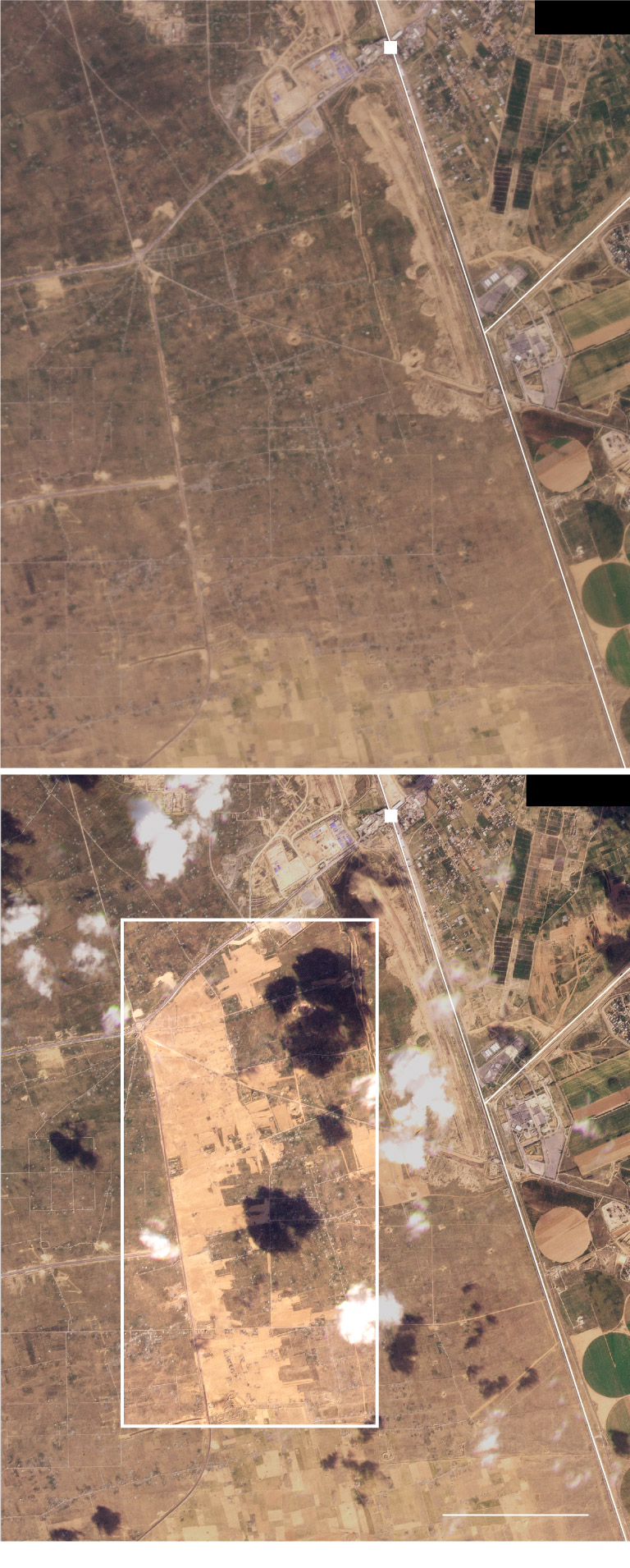
Satellite © Planet Labs 2024
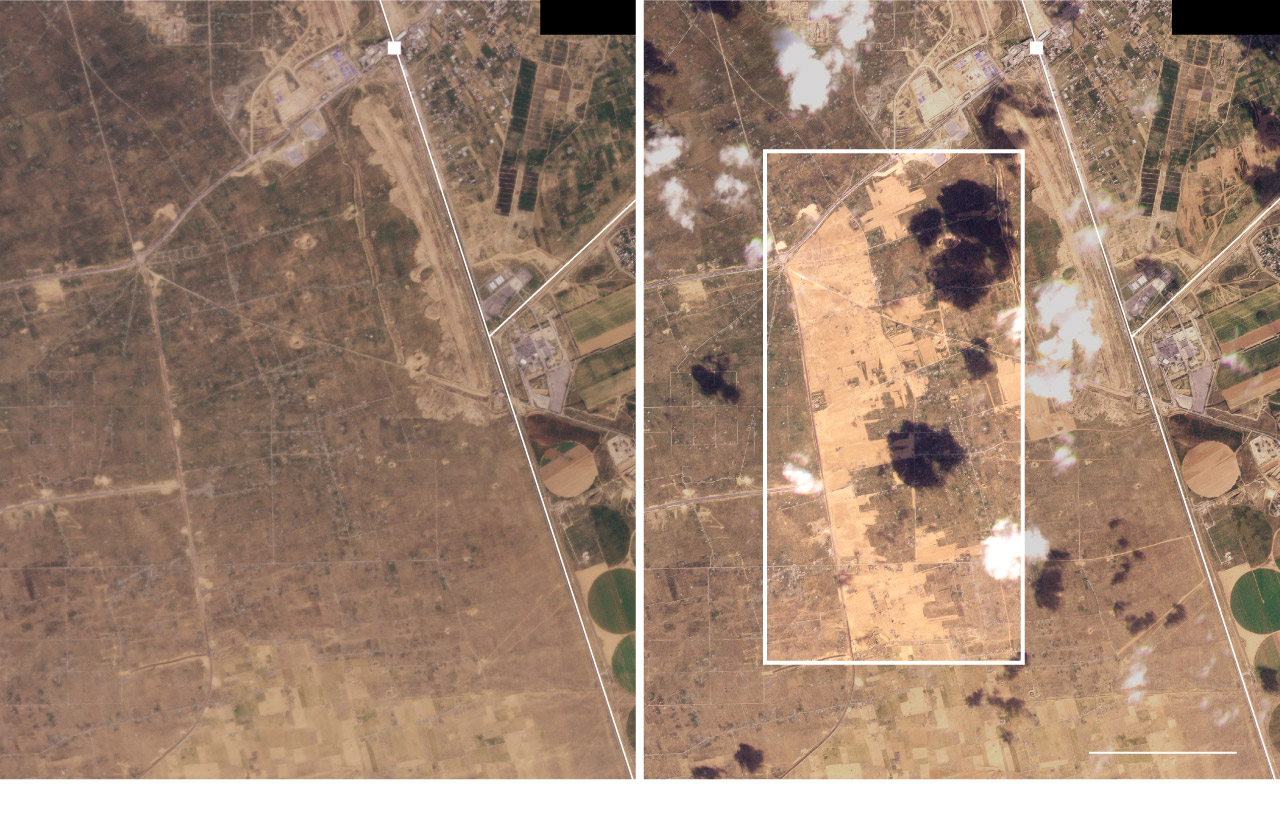
Satellite © Planet Labs 2024
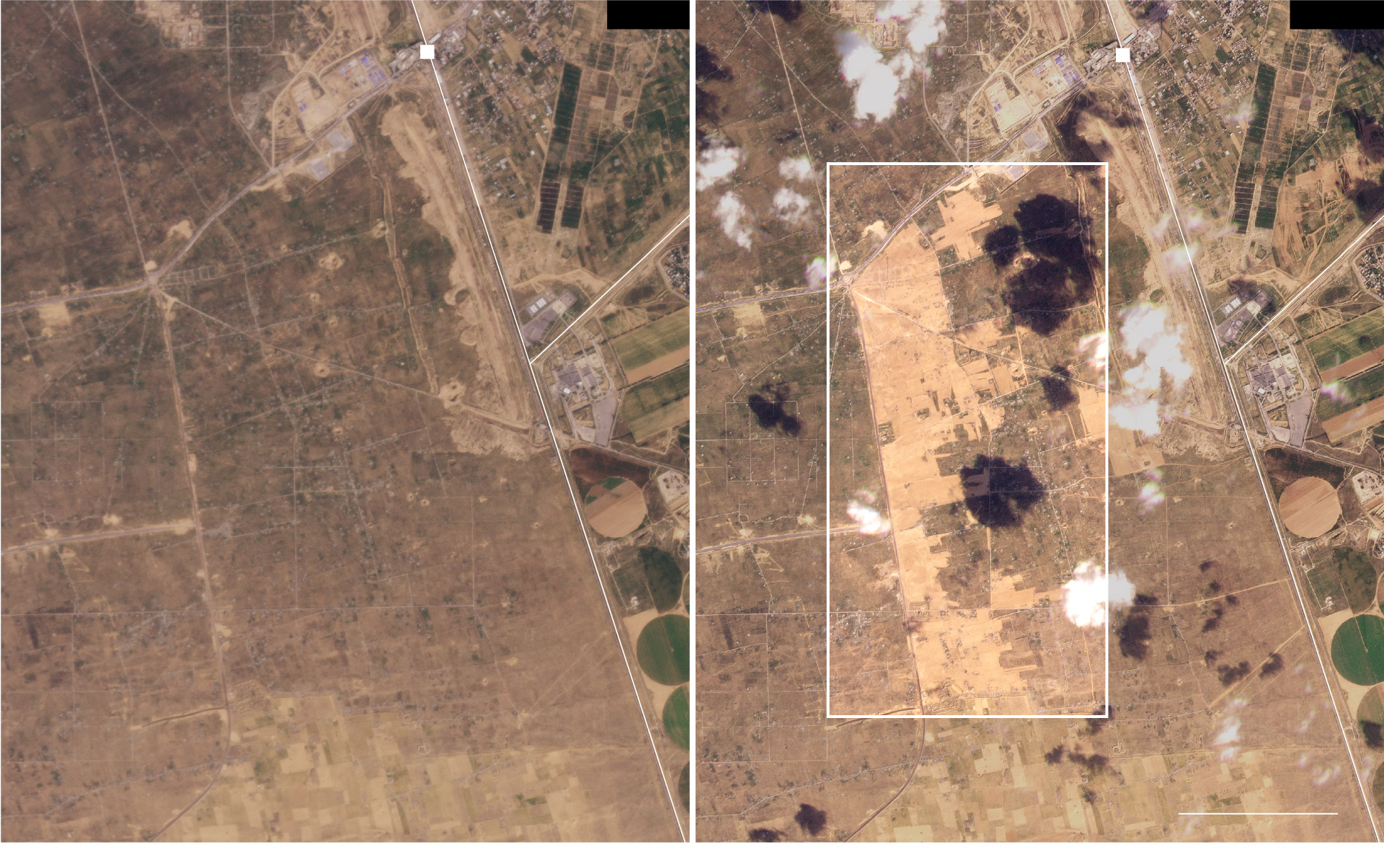
Satellite © Planet Labs 2024
Footage obtained by the organization and shared exclusively with The Post shows trucks and bulldozers clearing debris from a rectangular plot of land measuring about eight square miles adjacent to the Gaza border, with a concrete wall being built around the perimeter. The Post verified some of the footage and obtained satellite images that show that two square miles within that area were cleared between Feb. 5 and Wednesday.
Asked for comment, an Egyptian official referred The Post to a statement last month by Diaa Rashwan, head of the State Information Service. “Egypt has full sovereignty over its land, and has complete control over its entire northeastern borders, whether with the Gaza Strip or with Israel,” the statement said.
Despite its public refusal to entertain any scenario in which Palestinians are pushed into Egypt, the country is probably preparing contingency plans, a former Egyptian official said.
“If as a result of the attacks [in Rafah] tens of thousands of Palestinians cross the border, do you think the Egyptian army would shoot at them? The answer is no,” they said. “Any responsible government would have to think, ‘Okay, if we have the worst-case scenario, how would we deal with that?’”
Parker reported from Cairo and Berger from Jerusalem. Imogen Piper and Hajar Harb in London, Loay Ayyoub in Rafah and Hazem Balousha in Amman, Jordan contributed to this report.

